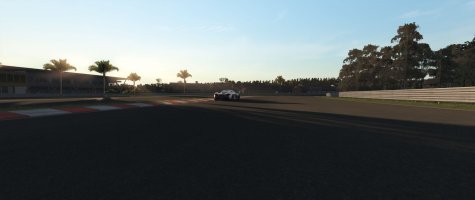I agree with you. Yes, the changing engine sounds being different all throughout the lap, totally alive. This is why I say that there should be a team (or at least 1 guy) dedicated to sound in all racing games. Not just sound samples but the core sound engine itself. With more and more sophisticated sound engines (along with sound-physics connection), we can replicate more and more of all the different sound dynamics happening in real-life and videos like that.
Apart from allll the different noises being emitted from real-life cars, there are also all sorts of further changes to the sound due to the environment such as walls, mountains, buildings, different materials like stone, steel, wood, temperature, humidity, etc.. There are games from the 1990s and even mid-2000s that were focusing on sound engine dynamics through the use of the old EAX 5.0. Sounds would change depending on walls, location, different materials the sound bounces off of, different materials the sound travels through, etc. and that was 15 years ago. There was quite an effort into the sound coding and design for some games instead of graphics like 99.9% of games. This stuff can definitely be done but it just needs the foundation setup (the sound engine itself) in order to be able to run all sorts of dynamics.
Also, closer sound-to-physics connection also gives more complexity and dynamics (ie. liveliness) to the sound.
You don't need to reach ear-drum overload because we all have the power to turn the volume up or down of our speakers just like we can with a youtube video. But even with a real-life video being played at low volume, you can still hear that it sounds, as you say, intense, powerful, alive and complex.
R3E is one of my favorite devs due to R3E's devotion to sound which is probably the best thing about racing besides driving (my opnion). Maybe further looking into the coding of the sound engine to take it to even another level higher can be considered?
What? Project Cars 2 is one of the only sims I currently don't own. Yes, I was part-way through sound-engineering school (only 1 month) and then I had to drop-out due to sudden financial difficulties and other unexpected commitments at the time. If not, I would totally be applying for a job at simracing developers. Besides physics and FFB (and physics "features" like rain, puddles, damage model, drivetrain model, etc.), all I care about in simracing is SOUND. I don't care about graphics, car lineup, circruit lineup, UI, game-modes, etc.)
I'm not in a position to do this for a job at the moment but I feel I can still contribute by trying to explain ideas on how to improve things or explain where and why things sound wrong and what to do to change them so they sound more correct.










